The impact of eCommerce on the baby products market is high, with around 25% of baby products sales taking place online. And with the pandemic causing more people to shop online, perhaps we can expect that number of online shoppers to increase in the year to come.
To take advantage of the recent shift online and stand out in an increasingly crowded market, baby and kids businesses need to create seamless, personalized experiences for their customers as part of their digital marketing strategy.
How can they do this?
Research from Epsilon shows that 80% of consumers are more likely to make a purchase when brands offer personalized experiences. Not to mention the fact that 74% of consumers actively feel frustrated when website content isn’t personalized.
Read on to find out which personalization tactics resonate with consumers and generate results, with eCommerce examples from three baby and kids businesses.
1) Product recommendations
Product recommendations are a tactic as old as retail itself. And when it comes to eCommerce, they’re proven to boost sales by up to a whopping 112%. But with many different types of product recommendations to choose from, make sure you select the right tactic for your business and customers.
Here are a couple of ways baby and kids businesses are using recommendations on their website and in email marketing.
New arrivals
We consumers have a built-in expectation that something new must be better than what came before. Recommending your newest products also builds excitement around the shopping experience. This is especially true in sectors driven by trends, such as kids brands selling games and toys.
The Happy Puzzle Company uses their hero banner to display new product arrivals on their homepage.
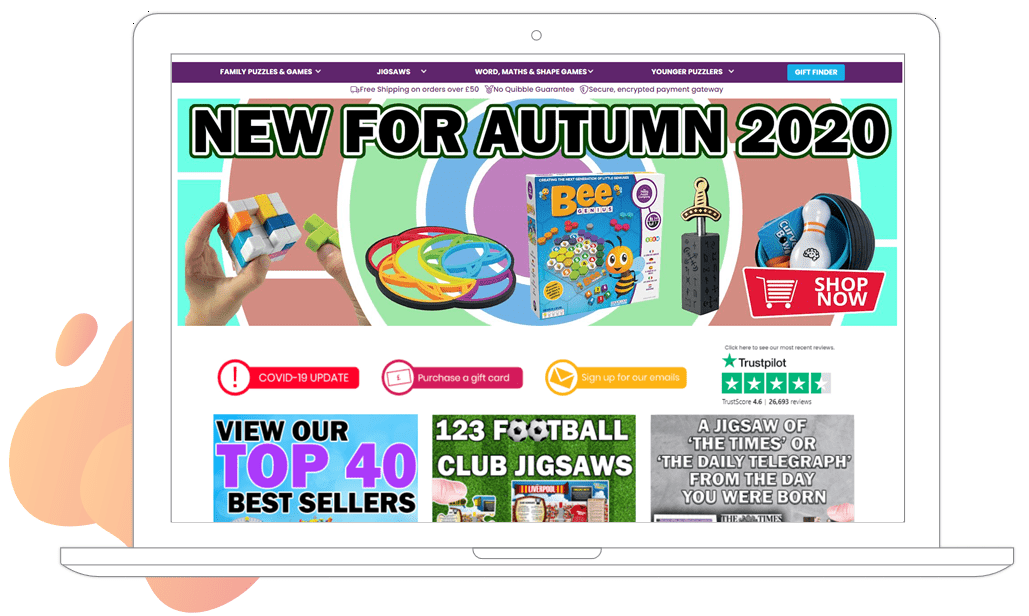
Source: happypuzzle.co.uk
Frequently purchased
Once shoppers have found products that work well for the babies and kids in their lives, they’re likely to develop preferences and brand loyalty. Recommending products based on past purchase and browse data enables Kleertjes.com to inspire their customers with products that are most likely to appeal to them. This in turn helps them increase email click through rates and boost conversions.
Kleertjes.com sends their shoppers branded newsletters, whereby any customer who buys a certain brand will receive an email with recommendations as soon as that brand’s new collection is released, making the online shopping experience seamless.
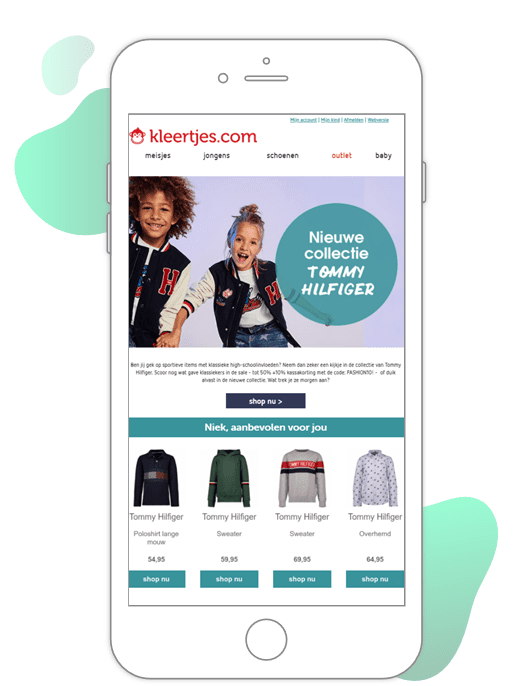
Source: Kleertjes.com
2) Dynamic content
Consumers want brands and retailers to take their preferences, behavior and real-time context into account, and dynamic content gives marketers the power to do just that. With dynamic content, each shopper sees content that is timely and relevant, which in turn boosts sales.
Countdown timers are a prime example of conversion-boosting dynamic content, and they’re an effective tool to build excitement and urgency around sales and special events.
The Entertainer uses a countdown timer banner on their category pages, homepage, and throughout the rest of their website to encourage customers to make their purchases before the sale ends. The countdown timer draws online buyers’ attention to the offer, increasing urgency and decreasing click to purchase as customers know they have a limited amount of time.
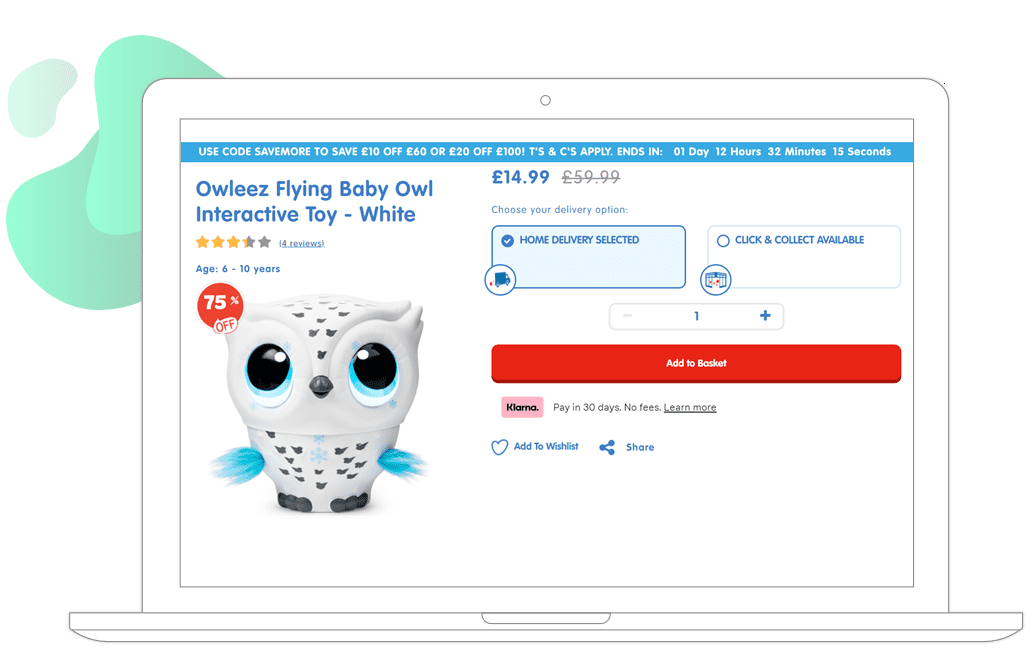
Source: thetoyshop.com
3) Social proof
When it comes to products for babies and kids, it’s often a considered purchase, as shoppers want to ensure the products are right for the little ones they’re buying for. So when shopping online for kids and baby products as opposed to in-store where customers can test and try out items before purchasing social proof cues are all the more crucial. Including social proof in your eCommerce marketing is proven to boost sales by up to 13%.
Here are a couple of social proof tactics baby and kids businesses are using.
Popularity messaging
When shopping in-store, seeing a crowd of fellow shoppers flocking around a product usually heightens our interest in that item. Popularity messaging is the eCommerce equivalent, showing shoppers that this is a product worth looking at and encouraging them to add the item to their cart.
The Entertainer uses real-time browsing data to display how many other shoppers are looking at a particular product.
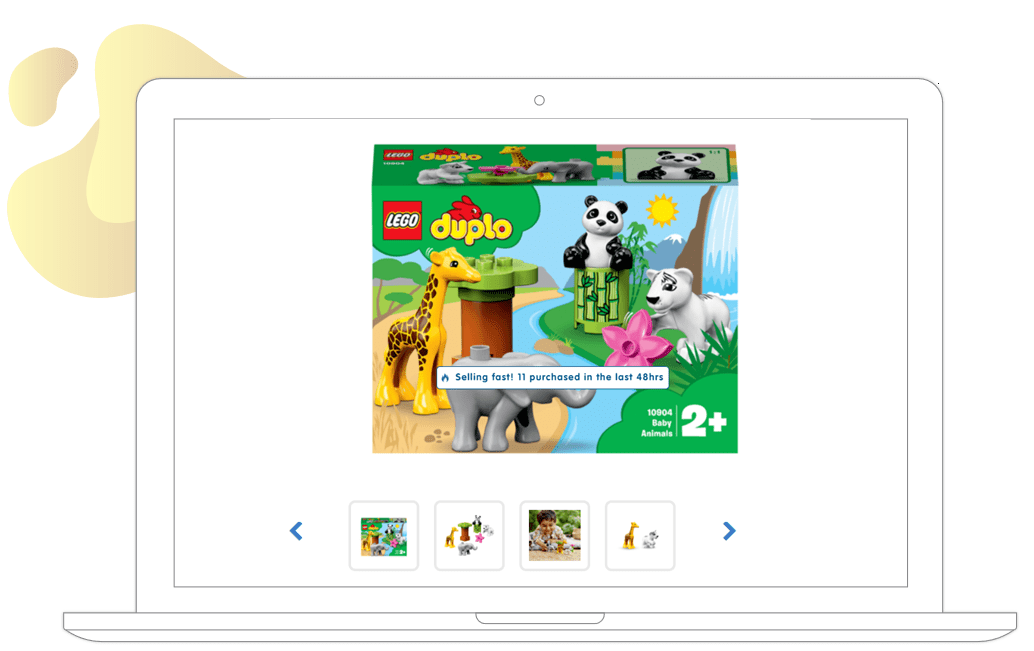
Source: thetoyshop.com
Star ratings and reviews
Displaying reviews and ratings helps ease purchase anxiety and build trust. And since more than 1 in 3 consumers won’t purchase if an online store doesn’t display reviews and ratings, it’s an essential addition to your website and email marketing.
The Happy Puzzle Company highlights star ratings and reviews on their product pages.
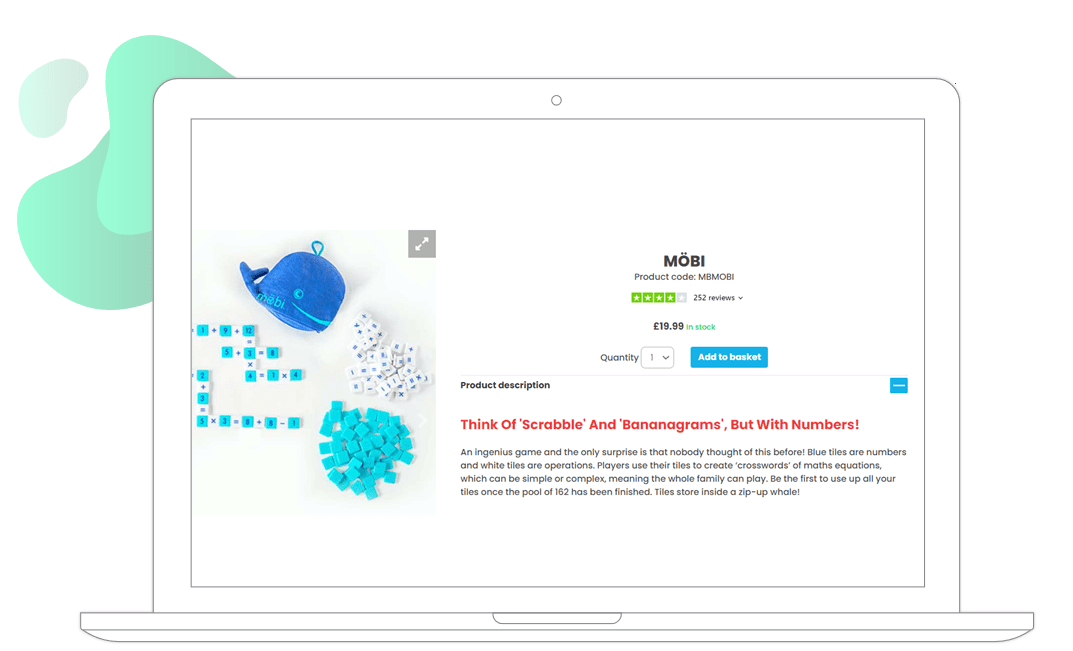
Source: happypuzzle.co.uk
4) Triggered emails
Make sure you’re delivering personalized, real-time content to your target audience at the moment they are most likely to convert by using triggered emails. With triggered emails, customers who take a pre-defined action (such as abandoning a shopping cart) are automatically sent an email that nudges them towards a next action (like completing their purchase).
Cart abandonment emails are probably the most well known type of triggered email. Our research shows that over 57% of carts are abandoned, making it a worthwhile tactic to add to your triggered email repertoire.
Kleertjes.com triggers a cart abandonment email 30 minutes after potential customers abandon their cart, with a second email being sent 24 hours later if the shopper hasn’t taken action. This enables them to react to high-intent behavior, nurture their shoppers and boost revenue. What’s more, sending a second cart abandonment email gives shoppers more options to reconsider making that purchase.
Cart and browse abandonment recovery emails are a proven revenue booster. In fact, Kleertjes.com has seen a 347% YOY increase for cart abandonment revenue with their multi-step abandonment emails.
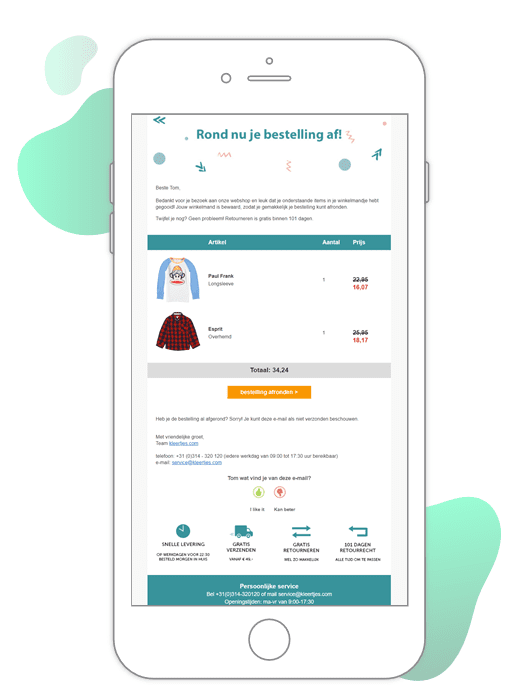
Source: Kleertjes.com email
For more inspiration check out our Ultimate Ecommerce CRO Lookbook [returning customers edition], packed with 17 real-life eCommerce personalization examples to foster brand loyalty and reconvert existing customers.


![Download The Ultimate Ecommerce CRO Lookbook [returning visitors edition]](https://no-cache.hubspot.com/cta/default/483487/b1e15d1c-606c-4eda-b539-957da0bd0a2e.png)



